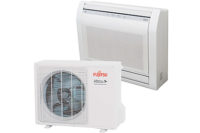Highlighting some of these economic and environmental strategies, the Food Marketing Institute’s (FMI’s) Energy & Technical Services Conference, being held through Wednesday, Sept. 12 at the Marriot Denver Tech Center, has invited all personnel involved in refrigeration, construction, engineering, maintenance, environmental issues, equipment purchasing/operations, and those responsible for energy management and utility cost control to attend.
According to FMI, this week’s conference offers strategies to reduce energy bills and cut operating costs as well as opportunities to learn about the latest technologies from leading vendors. Some of these opportunities include manufacturer/retailer exchange sessions, educational sessions, and facility tours that emphasize energy efficiency and savings.
During the manufacturer/retailer exchange sessions, attendees will have access to a wide array of new products and services and will be given the opportunity to explore how technology advancement will affect future product offerings. There will be more than 60 lighting, HVAC, refrigeration, and a/c systems vendors and suppliers on hand for informal discussions.
“Do not miss this chance to discuss your needs with the industry’s leading suppliers and learn which solutions may be best for your organization,” noted FMI.
ENERGY EDUCATION
There are many educational sessions being presented this week, but some are specifically targeted towards energy issues and the environment. Joel Gilbert, P.E., president, Gilbert and Associates and CEO, APOGEE Interactive Inc., is hosting “The Future of Energy.” In this 45-minute session, Gilbert will instruct attendees on how to navigate through changes in the energy market. He will also give the status of current national energy programs, trends in alternative sources of energy, and the status of energy resources.Julius Banks, National Recycling and Emissions Reduction program manager for the U.S. Environmental Protection Agency (EPA), is providing an update on the status of refrigerant leak regulations and its affect on the industry. Attendees will also find out why leading retailers are participating in the EPA’s GreenChill partnership and how it can benefit an organization.
The Energy Policy Act of 2005 (EPACT 2005) provides multiple tax breaks and incentives to encourage business and consumers to choose higher energy efficiency products. Kenneth Black, executive vice president of member services, E Source Co. LLC, will not only guide attendees through the process for obtaining tax deductions, but he will also instruct them on how EPACT 2005 can benefit their organization, as well as what new construction projects, upgrades, and retrofits apply.
Distributors have not been left out of the energy efficiency loop at this conference. “The Energy Efficient Distribution Center” session examines the components of an energy efficient distribution center, reviewing the design strategies and techniques to improve the effectiveness of lighting, refrigeration, controls, and HVAC systems.
One of the energy efficiency education highlights is “The Energy Efficient Store: Wal-Mart Case Study.” During this session, attendees will hear the results of Wal-Mart’s approach to reducing energy use. James McClendon, engineering director, Prototype and New Format Development, Wal-Mart Stores Inc., will discuss climate control, lighting, and alternative sources of energy.
APPLICATION TOURS
Besides the educational sessions being offered, FMI is also providing four facility tours to attendees. The power station, Coors Brewery, Whole Foods Markets®, and the Wal-Mart Aurora Experimental Store tours include facility walkthroughs and information concerning each company’s energy efficiency initiatives.The Wal-Mart Aurora Experimental Store is experimenting with materials, technology, and processes that will reduce the amounts of energy and natural resources required to operate and maintain the store, reduce the amount of raw materials needed to construct the facility, and substitute, when appropriate, the amount of renewable materials used to construct and maintain the facility.
This supercenter store is implementing radiant floor heating storewide, including inside its tire and lube express. The store has a cogeneration system that includes an absorption chiller plant, six 60-kilowatt micro-turbines, and a cooling tower. The system distributes the heating and indirect evaporative cooling generated through a “low velocity thermal displacement system” and uses fabric ductwork mounted 11 feet above the floor.
The store also has a solar wall that is covered in perforated metal siding. Heat build-up warms the air within the wall 10 to 20°F. Through convection and the ventilation system pulling the warm air into the supercenter, it creates a pre-heating system that helps reduce the energy necessary to run the mechanical heating systems.
Carbon dioxide sensors control the amount of outside air brought into the supercenter, saving money and protecting IAQ. Among many energy efficiency measures, the supercenter is experimenting with radiant heat snowmelt and a recovered cooking oil, waste-oil burner. The refrigeration units inside the store are all fitted with doors and operate using evaporative condensing secondary refrigerant technology that uses propylene glycol. According to the company, this reduces the amount of primary refrigerant necessary by approximately 50 percent.
MORE THAN EFFICIENCY
Beyond energy efficiency education and tours, there are considerable HVACR education sessions including Refrigeration 101, HVAC Strategies: Farm Fresh Case Study, Condensers - Air vs. Water, ASHRAE Update, HVAC 101, and a technician shortage discussion group.Attendees are also invited to “enjoy fantastic food and an open bar” at the Wings Over the Rockies social event. This former air force hangar allows participants to explore the cockpits of vintage aircraft, and “reconnect with friends and colleagues.”
For more information, visit www.fmi.org.
Publication date:09/10/2007



